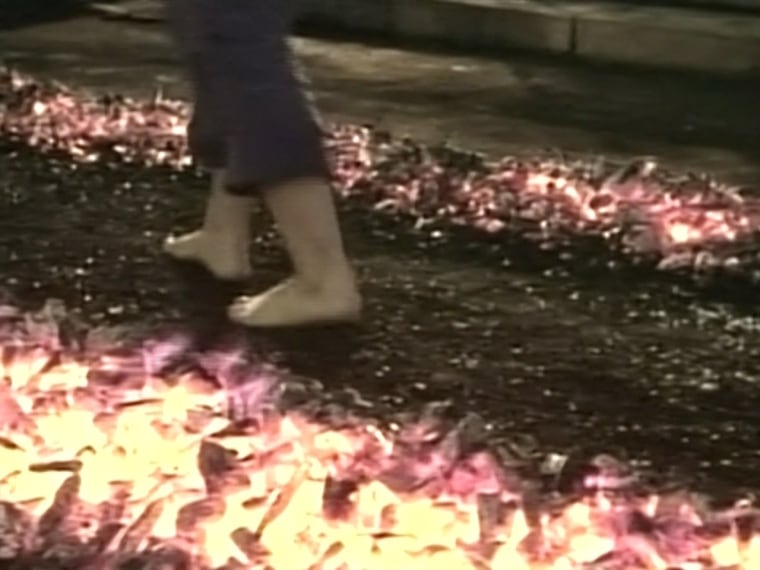As part of Tony Robbins’ motivational seminar “Unleash the Power Within” participants can opt to walk across a field of hot coals, which can reach temperatures as high as 1,000 degrees Fahrenheit. Firewalking is always an unforgettable experience, but especially so for some firewalkers at Robbins' conference on July 19 -- 21 participants suffered second and third degree burns.
Yet most people who walk across fire do not suffer from burns -- that's because coals are poor conductors of heat.
“There is not much energy on the surface of the coals -- as long as you do not linger, [you won’t get burned],” explains Jearl Walker, a professor of physics at Cleveland State University.
“You want to walk at a moderate pace and you do not want to run,” because running kicks up embers, resulting in burns.
Some reports indicate that some of the injured people from the Robbins event hesitated when crossing the fire. Standing on the coals too long or walking across freshly raked coals also increases the chance of sustaining burns.
Walker, who has firewalked seven times for classes and on his PBS show “Kinetic Karnival,” is one of the few experts on firewalking. While most of his firewalking experiences went off without a hitch, the third time he crossed the coals, an ember got caught under his toes and he carried it across the four feet of hot coals, causing third-degree burns.
Why would any rational person decide to walk barefoot across fire? It’s simple -- firewalking provides a high.
“(Y)ou meet the challenge and then feel good about yourself. It gives you a rush,” Walker says.
Prior to traversing a bed of hot coals, people step on wet grass, which protects them from burns. (Although Walker admits he is normally so nervous his feet are sweaty enough to provide a layer of moisture.)
The dampness protects the skin because of a phenomenon called the Leidenfrost Effect. Walker says people can easily observe this in the kitchen. If one sprinkles water on a hot skillet, at a temperature of less than 100 degrees Celsius, the water sizzles and evaporates. But if the temperature exceeds 100 degree Celsius, the water spreads, causing a vapor layer, which actually prevents the water from evaporating quickly. This also happens when people with damp (or sweaty) feet walk across the coals: “When you walk over coals [the water] might produce a vapor layer and you avoid a burn because of that,” Walker says.
Also, frequent firewalkers stroll around without shoes to build up calluses on their feet. (Pro tip: avoid pedis prior to a firewalk.)
“If you get really thick calluses and you burn part of them … you are not going [feel it],” Walker says.
Related:
